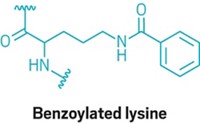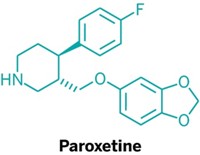Advertisement
Grab your lab coat. Let's get started
Welcome!
Welcome!
Create an account below to get 6 C&EN articles per month, receive newsletters and more - all free.
It seems this is your first time logging in online. Please enter the following information to continue.
As an ACS member you automatically get access to this site. All we need is few more details to create your reading experience.
Not you? Sign in with a different account.
Not you? Sign in with a different account.
ERROR 1
ERROR 1
ERROR 2
ERROR 2
ERROR 2
ERROR 2
ERROR 2
Password and Confirm password must match.
If you have an ACS member number, please enter it here so we can link this account to your membership. (optional)
ERROR 2
ACS values your privacy. By submitting your information, you are gaining access to C&EN and subscribing to our weekly newsletter. We use the information you provide to make your reading experience better, and we will never sell your data to third party members.
Epigenetics
Another histone modification found
Adding lactate to lysine in histones regulates gene expression
by Celia Henry Arnaud
October 27, 2019
| A version of this story appeared in
Volume 97, Issue 42
Recent research has suggested that lactate may have regulatory effects, but the mechanism was not clear. Now, a team led by Lev Becker and Yingming Zhao of the University of Chicago shows that it may exert those effects by chemically modifying histones—the protein spools that DNA is wrapped around. The researchers used high-performance liquid chromatography/mass spectrometry to identify 28 sites at which lactate was attached to lysine residues in histone proteins (Nature 2019, DOI: 10.1038/s41586-019-1678-1). “Lactate is an emerging metabolite regulating several immune functions,” says Claudio Mauro, a researcher at the Institute of Inflammation and Ageing at the University of Birmingham, who was not involved in the research. “This is the first report of lactate epigenetic modifications.” In the current study, the researchers exposed cells to low oxygen levels and bacteria and found that both lead to increased histone lactylation. In macrophages, a type of immune cell, lactylation turned on genes involved in wound healing. The researchers suggest that histone lactylation helps maintain homeostasis.




Join the conversation
Contact the reporter
Submit a Letter to the Editor for publication
Engage with us on Twitter